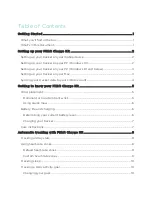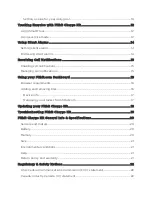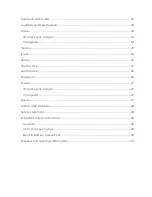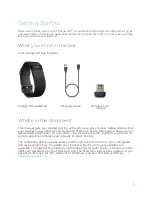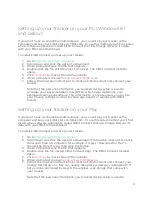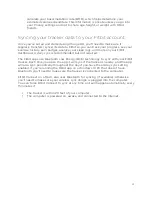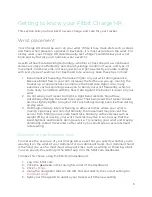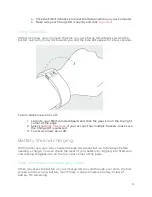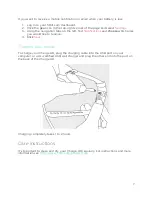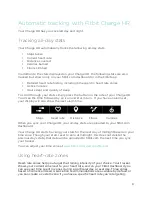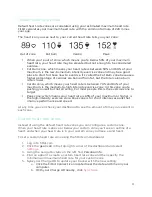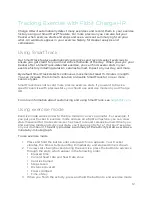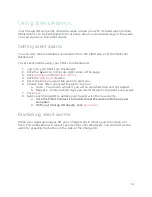
5
Getting to know your Fitbit Charge HR
This section tells you how best to wear, charge, and care for your tracker.
Wrist placement
Your Charge HR should be worn on your wrist. While it may track stats such as steps
and floors when placed in a pocket or backpack, it is most accurate on the wrist. For
all-day wear, your Charge HR should usually rest a finger’s width below your wrist
bone and lay flat (as you’d normally wear a watch).
As with all heart-rate tracking technology, whether a chest strap or a wrist-based
sensor, accuracy is affected by personal physiology, location of wear, and type of
movement. In other words, not every person will get a perfectly accurate reading
with every type of exercise. For best heart rate accuracy keep these tips in mind:
1.
Experiment with wearing the tracker higher on your wrist during exercise.
Because blood flow in your arm increases the farther up you go, moving the
tracker up a couple inches can improve the heart rate signal. Also, many
exercises such as spinning cause you to bend your wrist frequently, which is
more likely to interfere with the heart rate signal if the tracker is lower on your
wrist.
2.
Do not wear your tracker too tight; a tight band restricts blood flow,
potentially affecting the heart rate signal. That being said, the tracker should
also be slightly tighter (snug but not constricting) during exercise than during
all-day wear.
3.
With high-intensity interval training or other activities where your wrist is
moving vigorously and non-rhythmically, the movement may prevent the
sensor from finding an accurate heart rate. Similarly, with exercises such as
weight lifting or rowing, your wrist muscles may flex in such a way that the
band tightens and loosens during exercise. Try relaxing your wrist and staying
still briefly (about 10 seconds), after which you should see an accurate heart
rate reading.
Dominant or non-dominant wrist
To improve the accuracy of your Charge HR, we ask that you specify whether you’re
wearing it on the wrist of your dominant or non-dominant hand. Your dominant hand
is the hand you use for most day-to-day activities, such as writing or throwing a ball.
You can specify this setting in the Fitbit app or in the fitbit.com dashboard.
To make this choice using the fitbit.com dashboard:
1.
Log in to fitbit.com.
2.
Click the
gear icon
in the top-right corner of the dashboard.
3.
Click
Settings
.
4.
Using the navigation tabs on the left, find and specify the correct setting for
Dominant Hand
.
5.
Sync
your Charge HR to update your tracker with the new setting.


